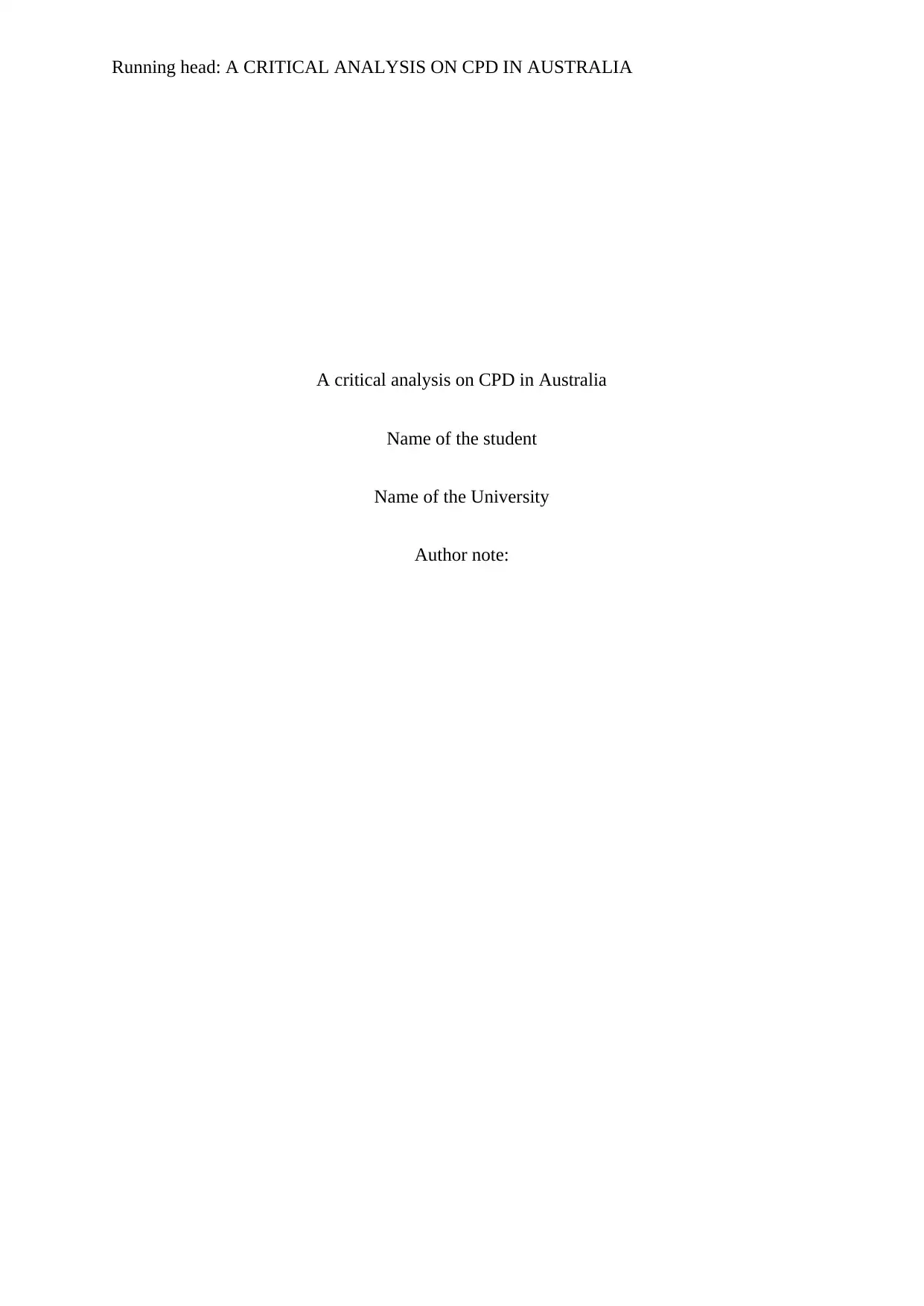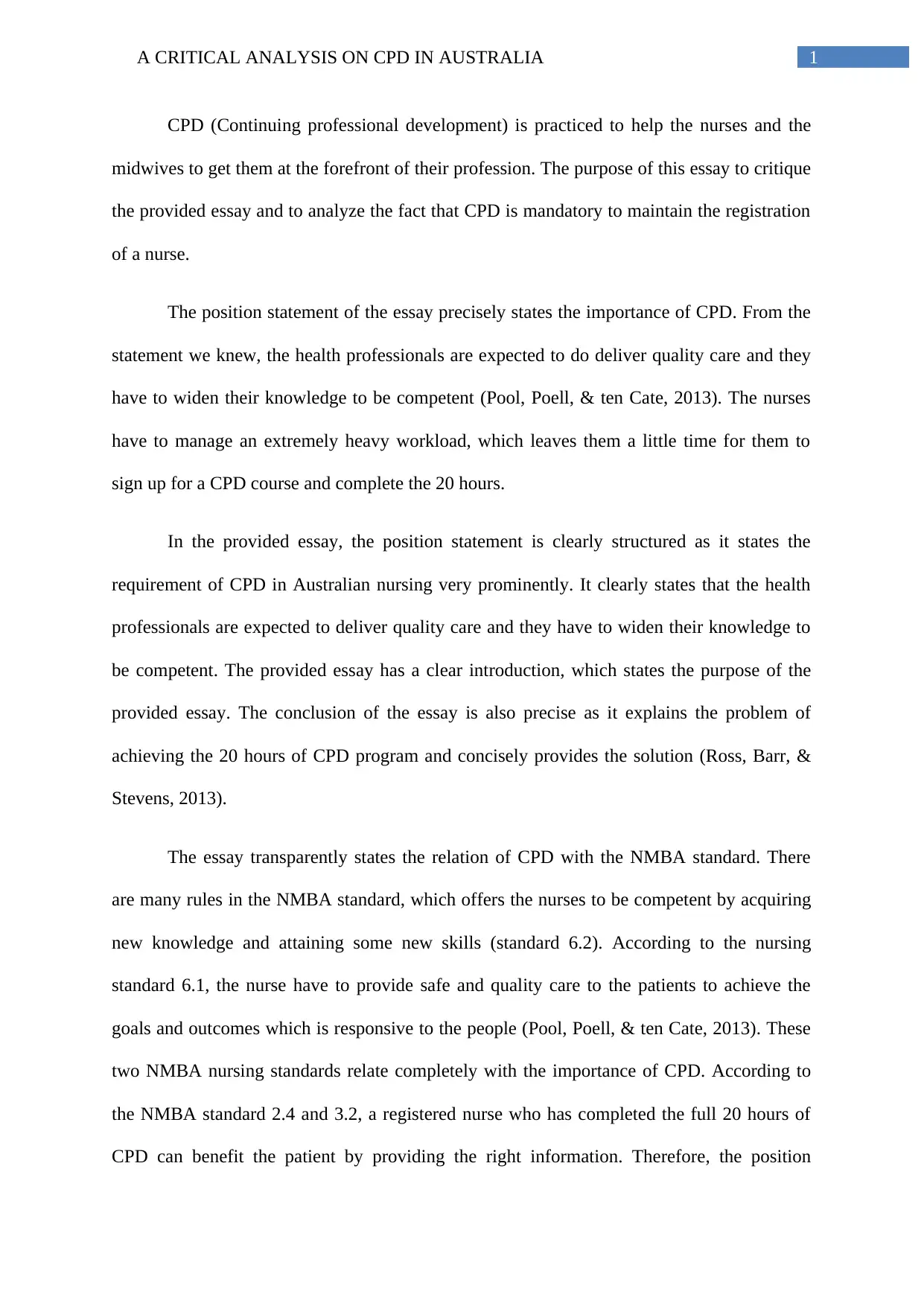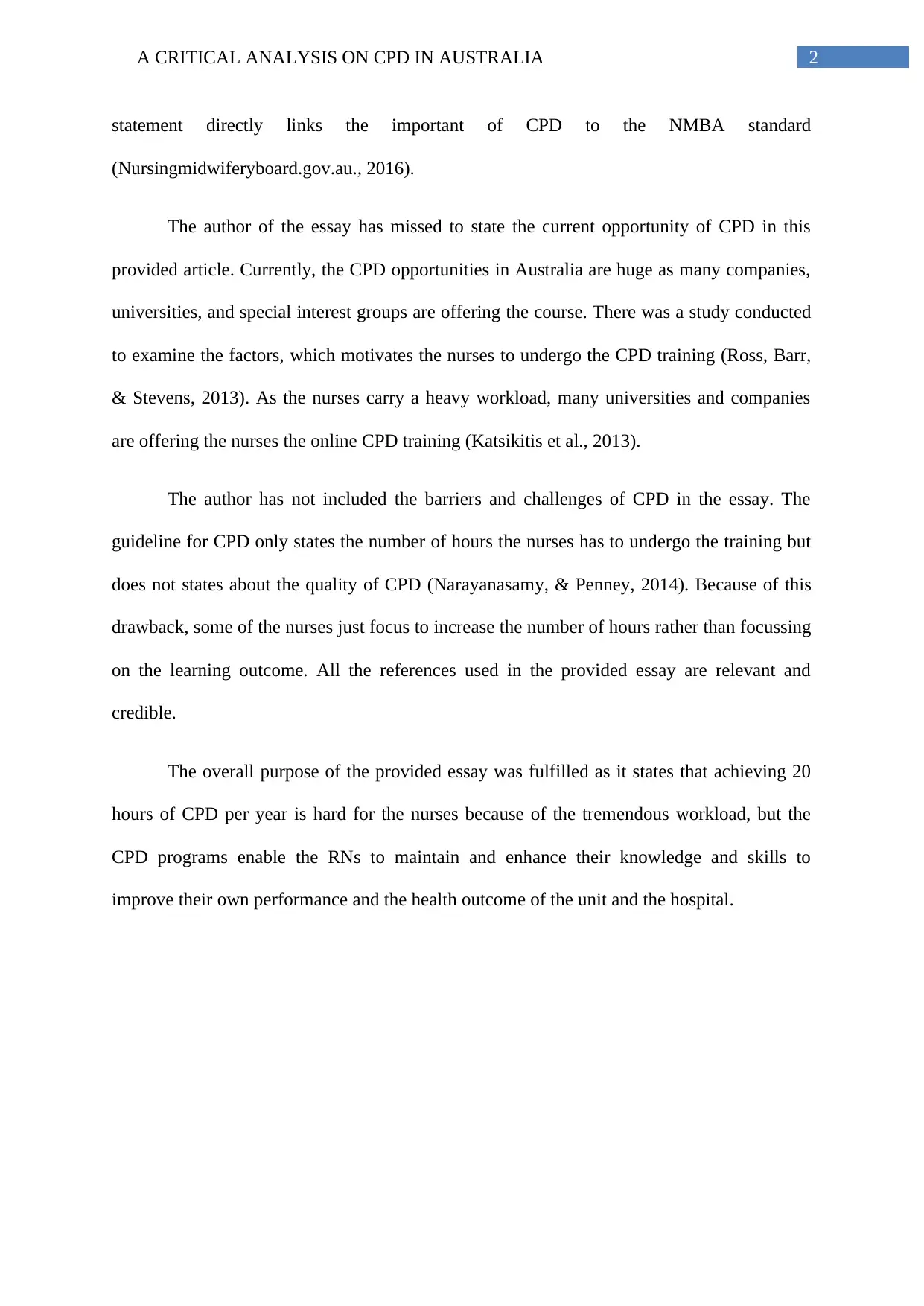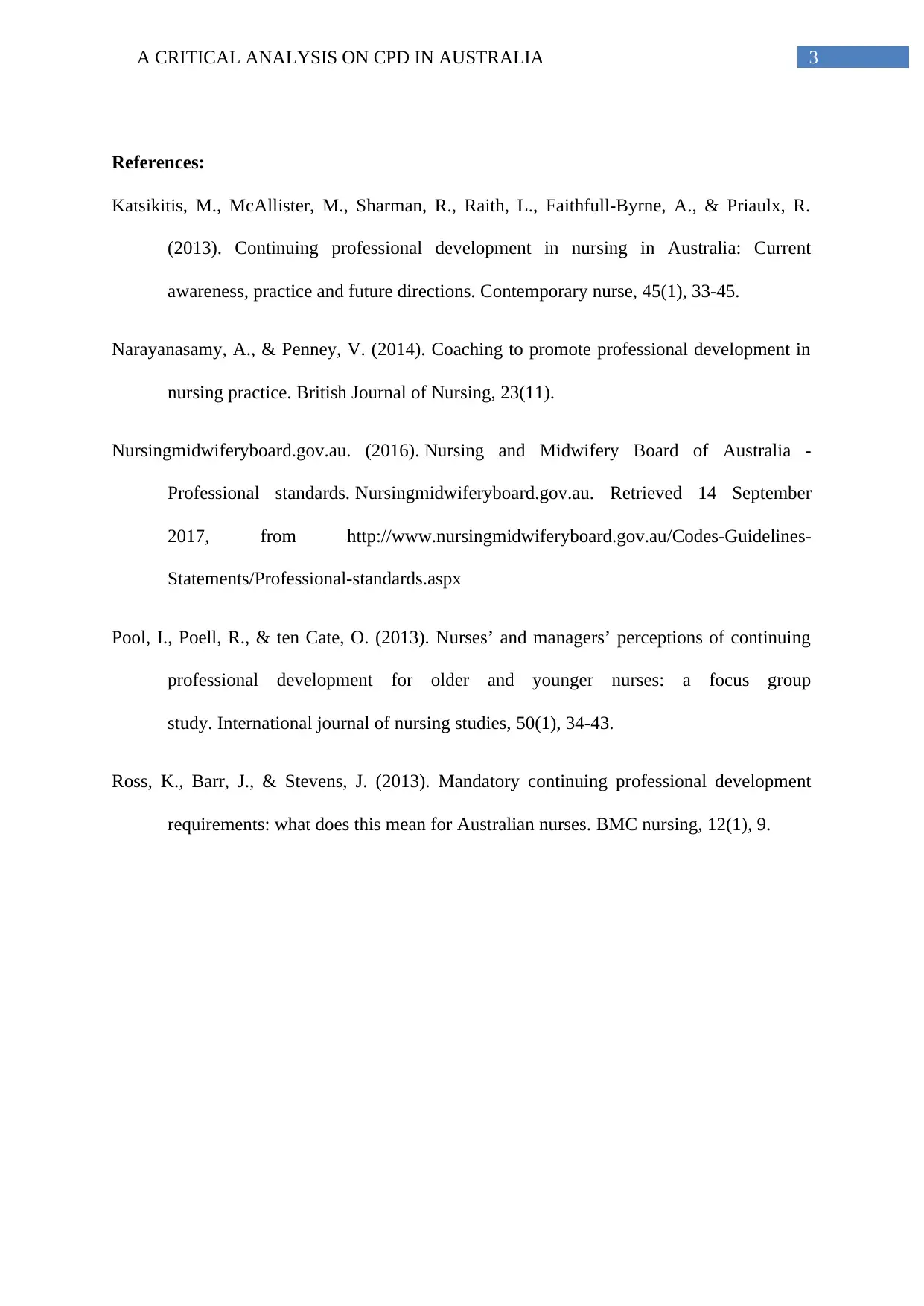Critical Analysis of CPD and NMBA Standards in Australian Nursing
VerifiedAdded on 2020/03/23
|4
|881
|212
Essay
AI Summary
This essay provides a critical analysis of Continuing Professional Development (CPD) in Australia, specifically within the nursing profession. It examines the mandatory nature of CPD for maintaining nursing registration and emphasizes its importance in ensuring nurses remain at the forefront of their field. The essay critiques a provided position statement, highlighting the link between CPD and the Nursing and Midwifery Board of Australia (NMBA) standards, particularly standards 6.1, 6.2, 2.4 and 3.2. It acknowledges the challenges nurses face in completing the required CPD hours due to heavy workloads but underscores the value of CPD in enhancing knowledge and skills. The analysis also points out some limitations, such as the lack of focus on the quality of CPD. Overall, the essay argues that while achieving the required 20 hours of CPD annually can be difficult, CPD programs are essential for improving nurses' performance and healthcare outcomes. The essay also highlights the availability of online CPD training offered by various institutions and companies to facilitate the process for nurses.
1 out of 4









![[object Object]](/_next/static/media/star-bottom.7253800d.svg)